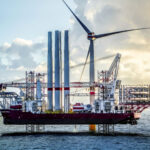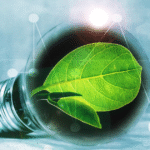February 11, 2021
In the U.S. Energy Information Administration’s (EIA) Annual Energy Outlook 2021 (AEO2021), EIA projects that U.S. energy-related carbon dioxide (CO2) emissions will decline for most years through the mid-2030s but then begin to rise slightly from the mid-2030s through 2050. In the AEO2021 Reference case, EIA projects that, by 2050, U.S. energy-related CO2 emissions will be 5% higher than 2020 levels.
EIA projects that decreases in CO2 emissions through the mid-2030s will largely be a result of changes in the carbon intensity (carbon dioxide per British thermal unit) of the fuel mix, especially in the electric power sector. EIA projects the mix of fuels used to generate electricity to continue to transition from relatively carbon-intensive coal to less carbon-intensive sources, such as natural gas, and carbon-free renewable energy.
EIA projects that U.S. energy-related CO2 emissions will increase in the latter years of the projection as a result of increasing economic growth that leads to growing industrial energy requirements. EIA projects energy use in transportation will increase as vehicle fuel efficiency plateaus in the mid-2020s and becomes outweighed by increases in vehicle travel demand.
EIA’s projections of energy-related CO2 emissions are greatly influenced by economic growth assumptions as represented in the AEO2021 side cases. The High Economic Growth case represents the largest projected increase in energy-related CO2 emissions, and the Low Economic Growth case represents the lowest growth in emissions, which results in a 20% difference between the two cases in 2050.
EIA’s assumptions related to domestic oil and natural gas supply also affect emissions projections. U.S. energy-related CO2 emissions increase in the High Oil and Gas Supply Case because natural gas is assumed to be more abundant, less expensive, and therefore more competitive with renewable energy sources. In the Low Oil and Gas Supply case, domestic resources are assumed to be limited, and natural gas is more expensive than and less competitive with renewables.
EIA’s renewable cost assumptions affect emissions projections as well. Emissions increase in the High Renewables Cost case because renewables are relatively less economically competitive with fossil fuels, especially natural gas. In the Low Renewables Cost case, relatively lower renewables costs lead to a larger renewables share of the total electricity generation mix.
Principal contributors: Perry Lindstrom, Kevin Nakolan
Original source: EIA.gov







